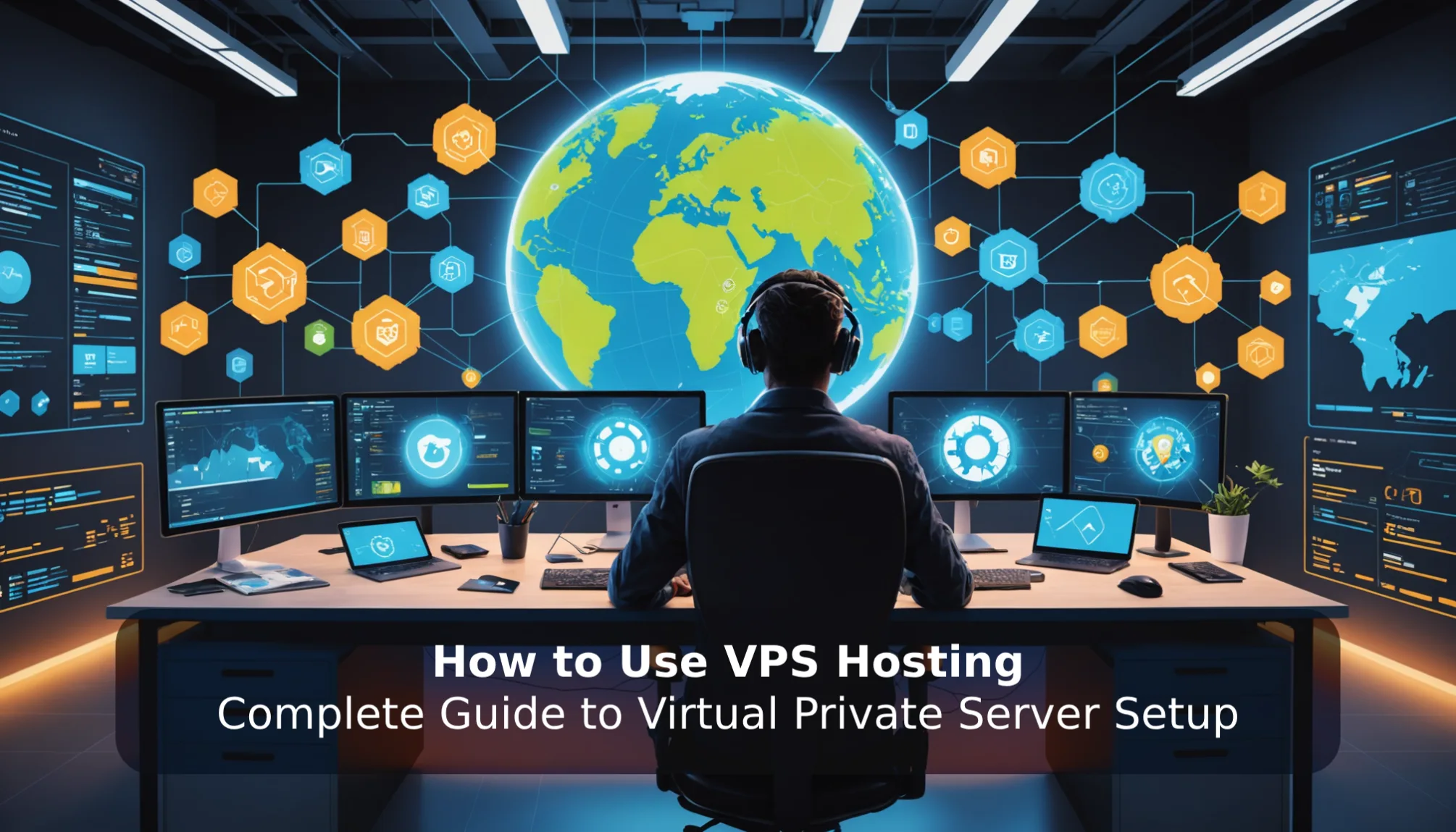Are you ready to unlock the power of your very own online server? Learning how to use VPS hosting can be your secret weapon in managing websites and applications like a pro! Imagine being able to control everything from performance to security, giving you the freedom to create and share your content without limits. Whether you’re a budding YouTuber or a creative genius, mastering this skill can make a huge difference in how you present your work.
If you don’t understand VPS hosting, you might miss out on a smoother website experience or even face frustrating downtime. In this article, we’ll dive into the basics of VPS, including how to set up your server, connect using SSH, and optimize for peak performance. Plus, we’ll share tips on choosing the right hosting provider and keeping your server secure. Get excited to take your online presence to the next level!
Understanding Virtual Private Server Basics for Optimal Server Management

Key Differences Between VPS Hosting and Shared Hosting
VPS hosting provides dedicated resources like processing power, RAM, and disk space, unlike shared hosting, where many users share the same server resources. This difference leads to better performance and stability, especially during peak traffic times, making VPS hosting ideal for businesses and applications that require reliable uptime.
| Feature | VPS Hosting | Shared Hosting |
|---|---|---|
| Resource Allocation | Dedicated virtual resources | Shared resources |
| Control | Full root access | Limited control |
| Performance | Consistent and robust | Variable performance |
| Security | Enhanced security measures | Basic security features |
(Hostinger, Bluehost)
Benefits of Using a VPS Server for Websites and Applications
VPS hosting offers numerous advantages, including scalability, which allows users to easily upgrade resources as needed without significant downtime. Additionally, the dedicated processing power ensures faster loading times, ultimately leading to improved user satisfaction and engagement. (Atlantic, Avena Cloud)
Choosing the Right VPS Hosting Provider for Your Needs
When selecting a VPS provider, consider factors such as uptime guarantees and customer support quality, as these can significantly impact your hosting experience. It’s also important to assess scalability options and managed service offerings that can accommodate your future growth needs.
Setting Up a VPS for the First Time

Essential Steps to Initialize Your VPS Server
- Select an Operating System: Choose a Linux distribution like Ubuntu or CentOS, as these are widely supported and have extensive documentation.
- Update Package Repositories: Refresh the package manager to ensure you have the latest software available, which is crucial for security and performance.
- Configure Basic Settings: Set up your server environment with a strong password and default user settings to enhance security right from the start.
Connecting to Your VPS Using Secure Shell (SSH)
To securely connect to your VPS, use an SSH client with the following command:
ssh root@your-vps-ip
This command uses the default SSH port unless otherwise specified; ensuring that SSH is configured correctly on your server is essential for maintaining security.
Implementing Public Key Authentication for Enhanced Security
Public key authentication enhances security by:
- Generating an SSH key pair (public and private keys), ensuring that only authorized users can access the server.
- Uploading the public key to the VPS, further reducing the risk of unauthorized access by eliminating password vulnerabilities.
How to Use VPS Hosting to Host a Website

Installing Web Server Software on Your VPS
To host a website, install web server software like Apache or Nginx (LiquidWeb). Use a package manager to simplify this process:
sudo apt install apache2
Proper installation of web server software is crucial for handling incoming requests efficiently and providing a seamless user experience.
Setting Up DNS for Your Domain
Configure DNS settings to point your domain to the VPS IP address:
- Create A records for your domain at your registrar, linking your domain name to your server’s IP address.
- Ensure correct DNS settings for seamless resolution, which is vital for making your website accessible to visitors.
Configuring Multiple Websites on a Single VPS
You can host multiple websites on one VPS by using virtual hosts:
- Create separate directories for each site on your server.
- Adjust server configuration files accordingly to allow each website to operate independently while sharing the same physical resources.
Optimizing Your VPS for Website Performance
To ensure optimal performance:
- Implement caching solutions that store frequently accessed data for quick retrieval.
- Monitor resource usage regularly with tools like
htopornetdatato identify bottlenecks. - Adjust configurations based on traffic demands, ensuring that your server can handle varying loads effectively.
Securing Your VPS Hosting Service

Essential Security Practices for VPS Management
Maintaining security involves regular software updates and patches to fix vulnerabilities. Strong password policies and daily backups of critical data are essential strategies that help protect against data loss and unauthorized access.
Configuring a Firewall to Protect Your Server
Set up a firewall using iptables or UFW to manage incoming and outgoing traffic effectively. This layer of security is crucial in preventing unauthorized access and ensuring that only necessary ports are open, which minimizes potential attack vectors.
Implementing Monitoring Tools for Security Alerts
Use tools like Fail2Ban to monitor your server and send alerts for suspicious activity. These tools can help you quickly respond to potential threats by notifying you of unusual login attempts or other security breaches.
Troubleshooting Common VPS Issues
Common issues include server downtime and slow performance. Regularly check logs and resource usage to identify and resolve problems before they escalate into significant outages, ensuring your website remains available to users.
Conclusion
VPS hosting is an excellent solution for those needing more control over their server environment. With dedicated resources, scalability options, and enhanced security measures, it outperforms traditional shared hosting services, making it suitable for both personal projects and professional applications.
FAQs
1. What is the main difference between VPS hosting and shared hosting?
VPS hosting provides dedicated resources and more control compared to shared hosting, which divides resources among multiple users.
2. How does public key authentication improve VPS security?
It uses cryptographic keys instead of passwords, reducing the risk of unauthorized access.
3. Can multiple websites be hosted on one VPS?
Yes, by configuring virtual hosts, a single VPS can manage several websites efficiently.
4. What are common issues with VPS hosting?
Common issues include slow performance, connectivity problems, and misconfigurations.
5. Why is a firewall necessary for VPS hosting?
A firewall helps manage traffic, blocking unauthorized access and enhancing security measures.

